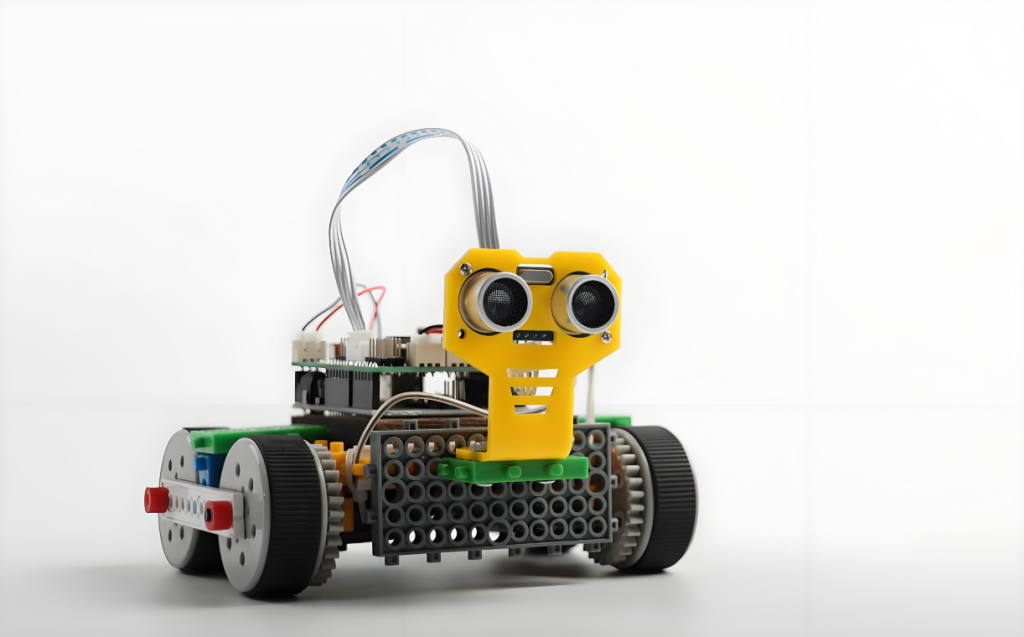Educational robots are a window for children to explore science and technology, and PCBs give them “superpowers”. In the following, the application of PCBs is described from three aspects, namely, basic programming robots, trajectory and obstacle avoidance robots, and bionic robots.

Basic Programming Robot
Electronic Component Carrying
PCB carries electronic components such as microcontrollers, sensors and actuators.
It provides the hardware foundation for the basic programming robot to realize various functions.
Circuit Connection
The PCB carries the electronic components such as microcontrollers, sensors and actuators, which provide the hardware foundation for the various functions of the basic programming robot.
Ensures that all parts of the robot work together.
Key Performance Factors
The stability and reliability of the PCB affects the performance of the robot.
Need to work properly in different environments and withstand certain physical shock and vibration.
Obstacle Avoidance Robot
Sensor and actuator connection
PCB connects infrared sensors, ultrasonic sensors and motor drive modules.
Provide hardware support for the robot to sense the environment and perform actions.
Signal Processing and Algorithm Implementation
Implement complex signal processing and control algorithms.
Make decisions such as forward, backward, turn, etc. based on sensor data.
Design and Manufacturing Quality Requirements
High-quality PCB design and manufacturing is critical to robot performance.
Fast and accurate processing of large amounts of sensor data is required.
Bionic Robots
Sophisticated Design Requirements
PCB design and manufacturing is more delicate and complex.
Carries flexible sensors, micro-motors, control chips, etc.
Simulation of biological systems
Realize highly integrated electronic system, simulate biological nervous system and muscle system.
Sense and react to changes in the environment to achieve highly flexible movement and operation.
Integration of Mechanical and Electronic Considerations
PCB design needs to take into account the mechanical structure and motion characteristics of the robot.
Ensure that the electronic system is perfectly integrated with the mechanical system.
PCBs play a key role in different types of robots, driving the continuous innovation and development of robotics.
